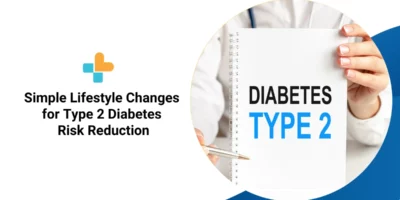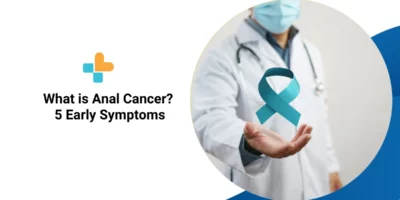As COVID-19 continues to impact the world, it’s important to prioritize our respiratory health. Breathing exercises can be powerful in recovering from COVID-19 and building overall respiratory strength. In this blog, we’ll explore some of the top breathing exercises to help boost your respiratory health and aid in COVID recovery.
How can breathing exercises help people with COVID-19?
Breathing exercises can help people with COVID-19 by strengthening the respiratory muscles and improving lung capacity, which can aid in the prevention of respiratory failure. They can also help reduce anxiety and stress levels, which can have a positive impact on overall health and wellbeing. However, breathing exercises alone cannot cure COVID-19 and medical treatment should still be sought if necessary.
Deep breathing can help in other ways as well, including:
Here are some ways that deep breathing can be helpful:
- Reducing stress and anxiety: Deep breathing triggers the relaxation response in the body, which can help reduce feelings of stress and anxiety.
- Improving focus and concentration: Deep breathing exercises can increase oxygen flow to the brain, which can improve mental clarity and focus.
- Enhancing sleep quality: Deep breathing exercises can help calm the mind and relax the body, which can promote better sleep.
- Lowering blood pressure: Deep breathing has been shown to lower blood pressure by reducing stress and promoting relaxation.
- Improving digestion: Deep breathing can stimulate the parasympathetic nervous system, which can help improve digestion and relieve gastrointestinal discomfort.
Overall, deep breathing is a simple and effective way to improve physical and mental health.
Can SARS-CoV2 infection be prevented by breathing techniques?
There is currently no evidence to suggest that breathing techniques alone can prevent SARS-CoV2 infection. However, practicing breathing exercises can have a positive impact on overall health and well-being, which can help support the immune system and potentially reduce the severity of COVID-19 symptoms. Here are some of the benefits of breathing techniqes in managing Covid-19:
- Breathing exercises can help improve lung capacity and respiratory muscle strength, which may aid in the prevention of respiratory failure.
- Deep breathing can reduce stress and anxiety levels, which can have a positive impact on overall health and wellbeing.
- Pranayama, a yogic breathing technique, has been shown to improve lung function in individuals with chronic obstructive pulmonary disease (COPD), which may have implications for COVID-19 management.
- Mindfulness meditation, which often involves deep breathing exercises, has been shown to improve immune function and reduce inflammation.
What are the best breathing exercises for an acute case of COVID-19?
COVID-19 can cause respiratory symptoms such as shortness of breath, coughing, and chest tightness. These symptoms can be severe in some cases and may require medical attention. However, breathing exercises can help manage respiratory symptoms in some cases.
Here are some breathing exercises that can be helpful for an acute case of COVID-19:
- Diaphragmatic breathing:
This technique involves breathing deeply from your diaphragm, rather than shallowly from your chest. Lie on your back with your knees bent or sit in a comfortable position with your feet flat on the ground. Place one hand on your chest and the other on your belly. Inhale deeply through your nose, feeling your belly expand under your hand. Exhale slowly through your mouth, feeling your belly flatten. Repeat for several breaths.
- Pursed-lip breathing:
This technique can help slow down your breathing and ease shortness of breath. Sit in a comfortable position and inhale deeply through your nose. Purse your lips as if you’re going to whistle, then exhale slowly through your pursed lips. Repeat for several breaths.
- Alternate nostril breathing:
This technique can help reduce stress and promote relaxation. Sit in a comfortable position and use your right thumb to close your right nostril. Inhale deeply through your left nostril, then use your right ring finger to close your left nostril. Exhale slowly through your right nostril. Inhale through your right nostril, then close it with your thumb and exhale through your left nostril. Repeat for several breaths.
It is important to note that these breathing exercises are not a substitute for medical treatment, and you should seek medical attention if you experience severe respiratory symptoms. Additionally, it is important to follow all public health guidelines, such as wearing a mask and practicing social distancing, to prevent the spread of COVID-19.
The techniques for people with long-haul COVID are the following:
Long-haul COVID, also known as post-acute sequelae of SARS-CoV-2 infection (PASC), refers to a condition where individuals continue to experience symptoms of COVID-19 long after the initial infection. Breathing exercises can be beneficial for people with long-haul COVID, and two specific techniques are Yawn to a Smile and Humming while exhaling.
Here’s a point-wise explanation of these techniques and how they relate to long-haul COVID:
- Yawn to a Smile:
This technique involves taking a deep breath and then yawning widely, as if trying to elicit a yawn. After the yawn, the individual should exhale slowly and then smile. This exercise can help increase the amount of oxygen in the body, which can be beneficial for those experiencing breathing difficulties due to long-haul COVID. Yawning also helps to stretch and open up the airways, which can help to alleviate chest tightness and shortness of breath.
- Humming while Exhaling:
This technique involves taking a deep breath and then exhaling slowly while making a humming sound. The individual should focus on making the humming sound last as long as possible, which can help to improve lung capacity and control breathing. This technique can also help to reduce stress and anxiety, which are common symptoms experienced by people with long-haul COVID.
In summary, both Yawn to a Smile and Humming while exhaling can be beneficial for people with long-haul COVID who are experiencing breathing difficulties. These techniques can help to increase oxygen levels, improve lung capacity, and reduce stress and anxiety. It’s always recommended to consult with a healthcare professional before starting any new breathing exercises, especially if you have a pre-existing respiratory condition or other health concerns.
The following steps must be followed to perform this exercise:
- Find a comfortable, quiet place to sit or lie down where you won’t be interrupted or distracted.
- Get into a relaxed posture, either sitting with your back straight or lying down on your back, and loosen any tight clothing.
- Begin by taking a few deep breaths in through your nose and out through your mouth to help calm your mind and body.
- Focus on your breath, noticing the sensation of air moving in and out of your body. You can place your hand on your belly to feel it rise and fall with each breath.
- Try to breathe slowly and deeply, inhaling through your nose and exhaling through your mouth. You can try counting to four as you inhale, holding your breath for a second or two, then exhaling for a count of four.
- As you continue breathing deeply, try to relax any tension or stress in your body, releasing it with each exhale.
- You can also experiment with different types of breathing exercises, such as alternate nostril breathing or the 4-7-8 technique, to find what works best for you.
Remember to always listen to your body and stop any breathing exercise that feels uncomfortable or causes dizziness or lightheadedness.
Conclusion
In conclusion, practicing breathing exercises can be a beneficial tool in improving respiratory health and aiding in COVID recovery. These exercises can help increase lung capacity, improve oxygen flow, reduce stress, and promote relaxation. By incorporating these exercises into a daily routine, individuals can support their respiratory health and overall well-being during and after the COVID-19 pandemic. However, it is important to consult with a healthcare professional before starting any new exercise routine, especially for individuals with pre-existing medical conditions.
Additionally, Ayu Health as a network of hospitals with top specialists and is highly recommended for medical assistance.
Our Hospital Locations
General Surgery Hospitals in Chandigarh | General Surgery Hospitals in Bangalore | General Surgery Hospitals in Jaipur | General Surgery Hospitals in NCR | General Surgery Hospitals in Hyderabad
Our Doctors
General Surgery Doctors in Chandigarh | General Surgery Doctors in Bangalore | General Surgery Doctors in Jaipur | General Surgery Doctors in NCR | General Surgery Doctors in Hyderabad
About the Author

Dr. S. Goel
Dr. S. Goel is a renowned Internal Medicine Specialist currently practicing at Ayu Health, Bangalore. He is a Specialist in Internal Medicine, Diabetes HTN, Paediatric Care, and Family Medicine.




